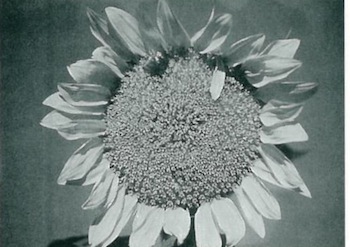
Last summer about this time when the Dragon Tongue beans began to thicken their speckled fingers and clutch heavy to the vine, I helped plant a circular “house” of sunflowers with an eager passel of kids. This sunflower circle was a ragged ring of paradise planted on the far edge of the kitchen garden near our giant Rosebrook apple tree.
I love any excuse to garden with children—any excuse at all. This is especially true in the summer when the imperial summons from the regnant vegetable kingdom is most strident. Over the last ten years at Green Gulch Farm we’ve been cooking up special meditation days for families once or twice a month. We call these days “treats” rather than retreats, since it is a real treat when the walls of the zendo expand out to include the domain of the garden and little children remind seasoned meditators about cultivating paradise on earth.
Paradise has never been a concept for me, never a metaphor, and never an escape from the living world. The word paradise comes from the old Persian pairidaeza, meaning “walled garden.” In our sunflower circle the walls of paradise were living walls, woven from the stuff of samsara: hirsuit sunflower stalks and the laughter of naughty children. These walls were a semipermeable membrane, letting in and out the entire world.
We took our time planting paradise. In March the kids heaved over the heavy spring earth and dug up their circles. Liz, my gardening buddy, and I helped with the grunt work. By early April we were planting sunflower seeds from all over the world: Maximillian Prairie sunflowers from Salina, Kansas, giant Russian sunflowers with their full striped seed, Italian white and Prado red sunflowers from Europe, and our New World favorite, the white-seeded sunflower of the Tarahumara people from western Mexico.
In May we transplanted more than eighty sprouted sunflower seedlings into deeper milk carton containers and by early June the children plotted paradise on the summer soil and planted out these sunflowers in a huge ring. Four broad pathways led into the center of Eden, which was left unplanted. “We want to lie down and look up at the sky,” seven-year-old Alisa announced to the assembled grown-ups, as we leaned on our spades in the shade of the apple tree.
All summer long the sunflower house anchored me to earthly paradise and muted the shrill demands of the garden crops. A stream of high-tea parties and secret ceremonies poured in and out of the Sunflower Circle. The first alpine strawberries were served on round nasturtium leaf plates by the children of paradise. Peals of red laughter pulsed through the sunflower walls. Solemn funeral services for a net-mangled wren were conducted in the inner sanctum of the sunflower house and tiny cups of condensed fog tea were set out around the ring for thirty honeybees heavy with pollen.
Just after Halloween the children pulled down the last, frost-gnawed stalks of their sunflower house. No trace remained. The walls of Eden collapsed out onto the wider garden, rotting in place. The children swarmed over the remnants of their paradise, collecting ripe seed from the split-open faces of the sunflowers.
Three weeks ago we planted this season’s sunflower circle in the summer garden. The first sprouts are emerging now: a brilliant green wall o fresh sunflowers, interwoven with pale morning glories and peppercress. The children of paradise did all the work this year, working from the outside in, and back out again.